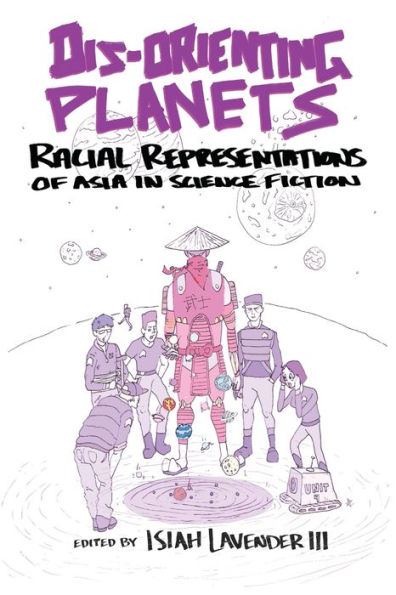Home
Dis-Orienting Planets: Racial Representations of Asia Science Fiction
Loading Inventory...
Barnes and Noble
Dis-Orienting Planets: Racial Representations of Asia Science Fiction
Current price: $110.00


Barnes and Noble
Dis-Orienting Planets: Racial Representations of Asia Science Fiction
Current price: $110.00
Loading Inventory...
Size: Hardcover
*Product Information may vary - to confirm product availability, pricing, and additional information please contact Barnes and Noble
Contributions by Suparno Banerjee, Cait Coker, Jeshua Enriquez, Joan Gordon, Veronica Hollinger, Malisa Kurtz, Stephanie Li, Bradford Lyau, Uppinder Mehan, Graham J. Murphy, Baryon Tensor Posadas, Amy J. Ransom, Robin Anne Reid, Haerin Shin, Stephen Hong Sohn, Takayuki Tatsumi, and Timothy J. Yamamura Isiah Lavender III's
Dis-Orienting Planets
amplifies critical issues surrounding the racial and ethnic dimensions of science fiction. This edited volume explores depictions of Asia and Asians in science fiction literature, film, and fandom with particular regard to China, Japan, India, and Korea.
highlights so-called yellow and brown peoples from the constellation of a historically white genre. The collection launches into political representations of Asian identity in science fiction's imagination, from fear of the Yellow Peril and its racist stereotypes to techno-Orientalism and the remains of a postcolonial heritage. Thus the essays, by contributors such as Takayuki Tatsumi, Veronica Hollinger, Uppinder Mehan, and Stephen Hong Sohn, reconfigure the very study of race in science fiction. A follow-up to Lavender's
Black and Brown Planets
, this collection expands the racial politics governing the renewed visibility of Asia in science fiction. One of the few on this subject, the volume probes Gary Shteyngart's novel
Super Sad True Love Story
, the acclaimed film
Cloud Atlas
, and Guillermo del Toro's monster film
Pacific Rim
, among others.
embarks on a wide-ranging assessment of Asian representations in science fiction, upon the determination that our visions of the future must include all people of color.


















